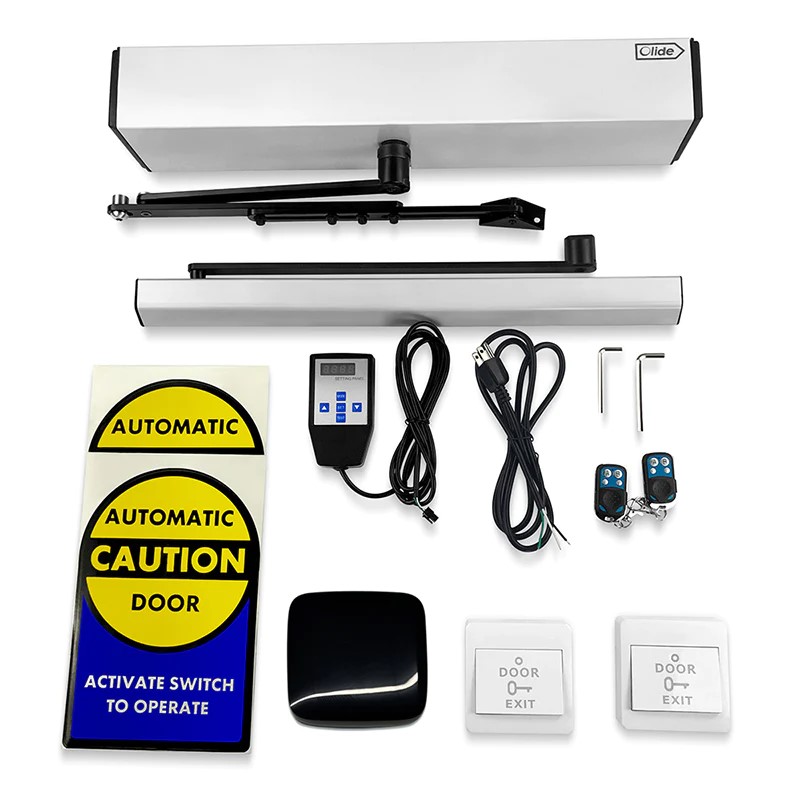Imagine a world where daily tasks, once challenging or impossible, become effortless. A world where technology adapts to individual needs, fostering independence and empowering individuals with disabilities. This is the transformative power of smart devices, revolutionizing accessibility by removing barriers and promoting inclusion.

Table of Contents
- Empowering Mobility: Smart Solutions for Freedom
- Automated Doors: A Seamless Gateway to Autonomy
- Motorized Shades: Light Control at Your Fingertips
- Wheelchair-Compatible Elevators: Reaching New Heights with Ease
- Voice is Power: Speech Recognition for Effortless Living
- Managing the Home with Simple Commands
- Staying Connected through Voice Communication
- Enhancing Safety and Security through Voice Assistance
- Beyond Walls: Smart Technology for Universal Design
- Smart Lighting: Illuminating the Path to Inclusivity
- Accessibility Features in Smart Appliances: Convenience Made Universal
- Smart Bathrooms: Promoting Dignity and Independence
- The Future of Accessibility: Innovations on the Horizon
- AI-Powered Assistive Devices: Personalized Support and Beyond
- Integrating Smart Technology into Public Spaces: Building Inclusive Communities
- The Importance of Accessibility Standards: Ensuring Equitable Access for All
- Conclusion
- FAQs
Empowering Mobility: Smart Solutions for Freedom
For individuals with mobility limitations, navigating daily tasks can be demanding. Smart devices step in, removing physical barriers and fostering independence.
Automated Doors: Imagine effortlessly entering and exiting your home without manual doors. Automated doors equipped with sensors or voice commands eliminate the need for physical interaction, promoting seamless navigation and autonomy.

Buy Olide Automatic on Amazon
Understanding Automatic Doors: A Comprehensive Guide
Motorized Shades: Controlling natural light can be challenging, especially with limited mobility. Motorized shades offer a solution, allowing you to adjust light levels with voice commands or remote controls, creating a comfortable and accessible environment.
Wheelchair-Compatible Elevators: Reaching different floors becomes effortless with wheelchair-compatible elevators. These elevators feature wider doors, lower buttons, and ample space for maneuverability, ensuring inclusivity and freedom of movement within multi-story buildings.
Voice is Power: Speech Recognition for Effortless Living
Imagine controlling your entire home environment using only your voice. Speech recognition technology empowers individuals, particularly those with limited dexterity or visual impairments, to manage daily tasks effortlessly.
Managing the Home with Simple Commands: Adjust lights, temperature, and appliances using voice commands. This reduces reliance on manual controls, promoting independence and simplifying routine tasks.
Staying Connected through Voice Communication: Connect with loved ones, answer calls, and even send messages simply through voice commands. This combats isolation and fosters communication regardless of physical limitations.
Enhancing Safety and Security with Voice Assistance: Trigger emergency alerts, control smart locks, and monitor security cameras using voice commands. This offers increased security and peace of mind for individuals who may require assistance in emergencies.
Beyond Walls: Smart Technology for Universal Design
Accessibility shouldn’t end at the front door. Smart devices integrated into homes and public spaces create a truly inclusive environment.
Smart Lighting: Smart lights automatically adjust based on natural light or preset schedules, ensuring proper illumination and visibility for everyone. This benefits individuals with visual impairments or sensitivity to bright light.
Accessibility Features in Smart Appliances: Appliances with voice control, automated settings, and accessible interfaces eliminate the need for complex manual controls. This promotes independent use by individuals with various physical limitations.
Smart Bathrooms: Imagine smart toilets that adjust height automatically or showers with voice-controlled temperature settings. Smart bathrooms offer dignity and independence for individuals with limited mobility or dexterity.
The Future of Accessibility: Innovations on the Horizon
The future of accessibility is bright, with continuous advancements in smart technology pushing the boundaries of what’s possible.
AI-Powered Assistive Devices: Imagine AI-powered robots that provide personalized assistance with daily tasks, like dressing or fetching objects. These advancements have the potential to revolutionize independent living for individuals with various needs.
Integrating Smart Technology into Public Spaces: Smart cities with accessible transportation systems, voice-activated information kiosks, and inclusive building design will further break down barriers and create truly inclusive communities.
The Importance of Accessibility Standards: As technology evolves, ensuring accessibility standards are met is crucial. This includes designing with diverse needs in mind and advocating for inclusive products and services.
Frequently Asked Questions (FAQs)
1. Are smart devices for accessibility expensive?
While some high-end smart devices can be pricey, there are several affordable options available, especially as accessibility features become increasingly mainstream. Additionally, government grants and assistance programs might be available to help offset costs.
2. Are smart devices for accessibility difficult to set up and use?
Many smart devices for accessibility are designed with user-friendliness in mind, often featuring voice control, simple interfaces, and compatibility with different operating systems. Additionally, many manufacturers offer installation and support services to ensure a smooth onboarding experience.
3. Are smart devices for accessibility secure and reliable?
Security and reliability are crucial concerns, especially when dealing with devices impacting daily life. Look for reputable brands with proven track records and choose devices with strong security features and regular software updates.
4. What are the environmental benefits of using smart devices for accessibility?
Smart devices can promote energy efficiency by automating tasks and optimizing resource usage. For example, smart thermostats can learn your heating and cooling preferences, reducing unnecessary energy consumption.
5. How can I get involved in advocating for accessible technology?
Supporting organizations focused on disability rights and advocating for accessibility standards in tech development are impactful ways to contribute. Additionally, spreading awareness about the benefits of accessible technology can encourage broader adoption and inclusivity.
By addressing these common questions, you can further empower readers to explore the potential of smart devices in their own lives and contribute to building a more accessible future for all.
Conclusion
Smart devices are not just gadgets; they are tools for empowerment and inclusion. By embracing accessibility-focused technology, we can create a world where everyone, regardless of ability, can thrive and enjoy independent living. Let’s work together to unlock the full potential of these innovations and build a future where accessibility is not an afterthought, but a cornerstone of design and progress.


